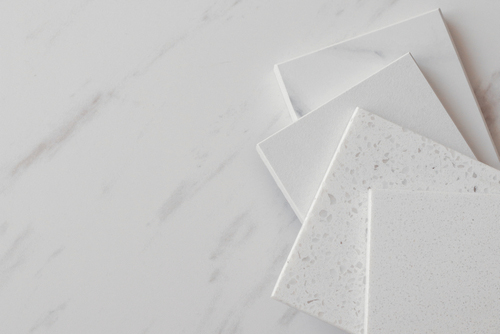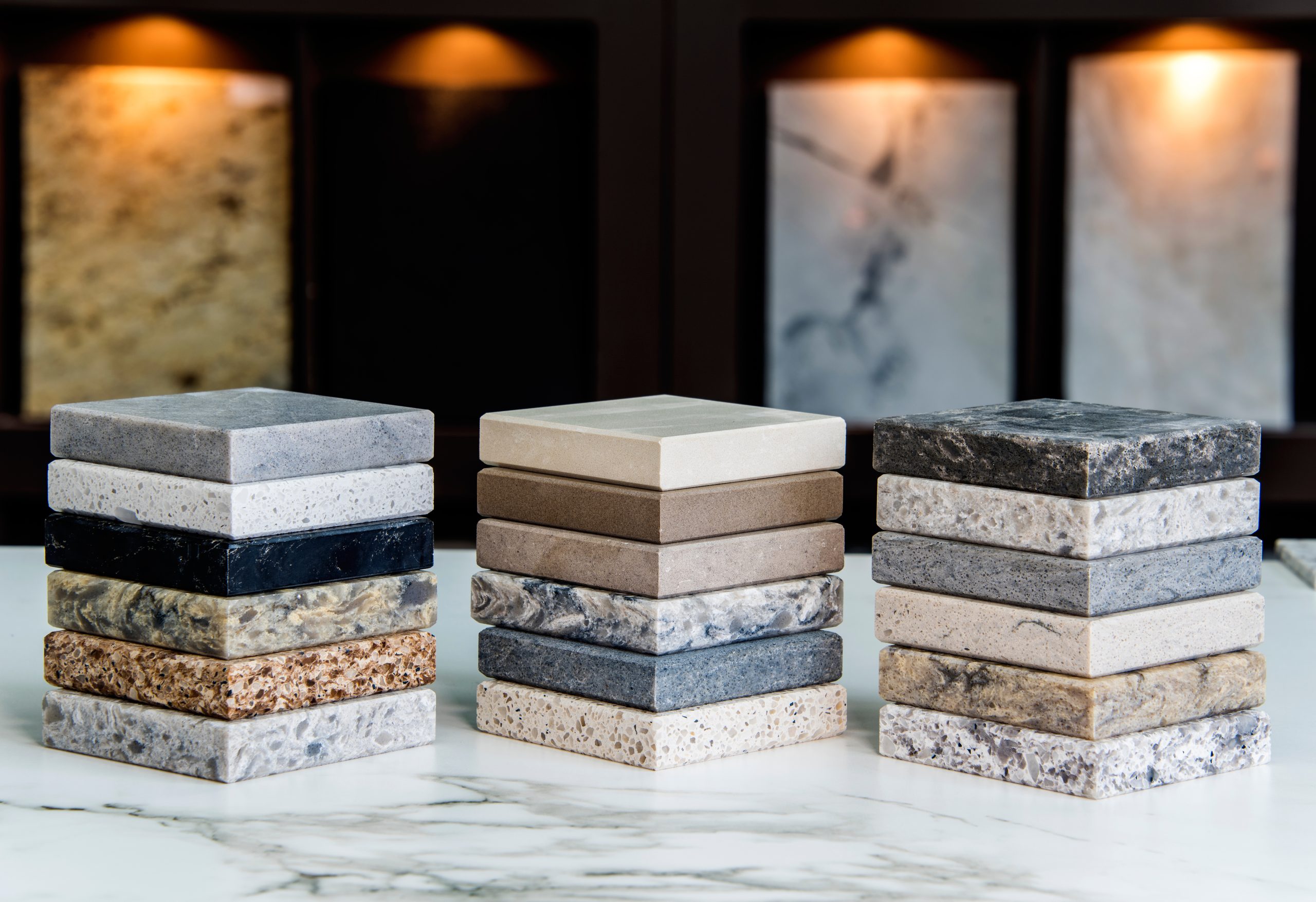
Choosing countertops for multifamily buildings presents a unique challenge. They need to be aesthetically pleasing, withstand frequent use by multiple tenants, and offer good value for the investment. Two popular options are granite and quartz, each boasting distinct advantages.
This guide examines the key differences between granite and quartz, helping designers, developers, and general contractors make informed decisions about their multifamily housing projects.
Understanding Granite Countertops
Granite is an igneous rock formed from cooled magma deep beneath the Earth’s surface. It is primarily composed of quartz, feldspar, and mica, which contribute to its hardness and color variation. This natural process ensures that each granite slab is unique, with patterns and hues that vary widely from piece to piece.
Appearance
The natural beauty of granite lies in its striking and diverse patterns. Each slab of granite displays a unique combination of color and mineral deposits, creating a rich tapestry that can range from subtle, homogeneous looks to bold, contrasting flecks.
Durability
Granite is renowned for its exceptional durability. It resists heat, scratches, and chips better than many other countertop materials, making it ideal for kitchens and bathrooms in multifamily buildings where functionality cannot be compromised. Its hardness is particularly advantageous in high-traffic areas, ensuring longevity and maintaining appearance over time.
Maintenance
While granite is durable, it requires some maintenance to preserve its natural beauty. It needs to be sealed periodically to prevent stains and moisture from penetrating the surface. The sealing process is not overly burdensome but is essential to ensure the countertop remains non-porous and resistant to common kitchen and bathroom spills. Regular cleaning with gentle, non-abrasive cleaners is also recommended to maintain its luster and finish.
Also Read – How to Choose the Right Wooden Cabinets for Your Kitchen
Exploring Quartz Countertops
Quartz countertops are engineered stone surfaces made from a blend of natural quartz crystals, resins, and pigments. This composition is made up of approximately 90% natural stone material and 10% polymeric or cement-based binders. The manufacturing process allows for a controlled product that delivers consistency and strength, distinguishing it from naturally occurring stone slabs like granite.
Appearance
One of the primary advantages of quartz is its aesthetic consistency. Unlike natural stone, quartz offers uniform patterns and colors, providing a sleek and modern look across large surfaces without irregularities. The wide range of available colors and finishes allows designers to tailor spaces to specific interior themes, making quartz a versatile choice for multifamily buildings.
Durability
Quartz is highly durable due to its engineered composition. Its surface is non-porous, which not only makes it resistant to staining but also prevents bacteria and mold growth, an essential feature for cleanliness in kitchen and bathroom environments. Additionally, quartz is scratch-resistant, though it is slightly more susceptible to heat damage compared to granite.
Maintenance
The maintenance of quartz countertops is notably straightforward. Since it is non-porous, quartz does not require sealing, unlike natural stone countertops. Routine cleaning with mild soap and water is typically sufficient to keep quartz surfaces looking pristine. This low-maintenance aspect makes quartz an appealing option for multifamily properties, reducing the long-term care costs and efforts for property managers.
Also Read – Why Choose Natural Granite Countertops?
Comparative Analysis: Granite vs. Quartz in Multifamily Settings
Both materials have their merits, and the choice often comes down to the specific needs of the project, including budget, design preferences, and the expected level of use within the building.
Aesthetic Appeal
Granite countertops are celebrated for their unique, natural appearance, with each slab displaying distinct mineral patterns. This makes them ideal for creating statement pieces in common areas or luxury apartments within multifamily buildings. Quartz, on the other hand, offers a more uniform appearance with consistent colors and patterns. This can be advantageous for projects requiring a modern, cohesive look across multiple units.
Longevity and Upkeep
Both materials are known for their durability, but there are nuances to consider in a high-traffic environment like a multifamily building. Quartz is non-porous and resists staining better than granite, which is porous and requires annual sealing to prevent stains and harbor bacteria. This makes quartz generally easier to maintain in the long term, reducing the ongoing maintenance burden.
Cost Implications
Initial installation costs for quartz tend to be higher than granite; however, the lower maintenance needs of quartz can offset these initial costs over time. Granite requires more frequent sealing and careful handling to avoid stains, potentially increasing long-term maintenance costs.
Making an Informed Decision for Multifamily Interiors
When comparing granite and quartz, it’s clear that both materials offer distinct advantages. Granite provides a unique, luxurious look with each slab. At the same time, quartz offers uniformity and minimal maintenance, making it ideal for larger projects. Property developers should consider factors such as budget, design aesthetic, and the level of traffic in the building when choosing between these options.
Republic Elite understands the importance of selecting the right materials for your multifamily interiors. Reach out to us to explore the best countertop solutions tailored to meet the specific needs of your tenants and properties.



